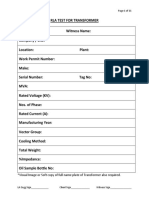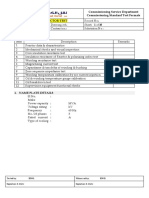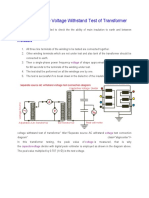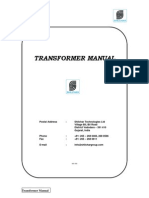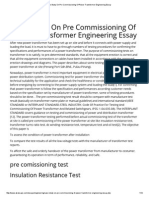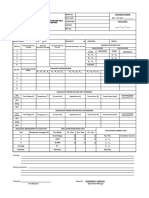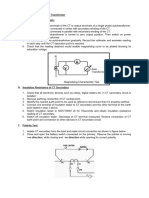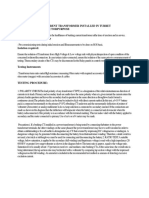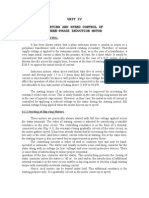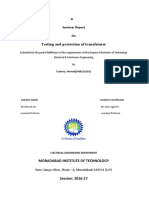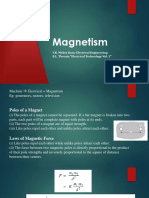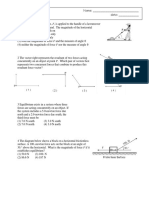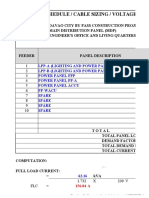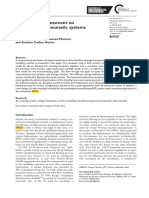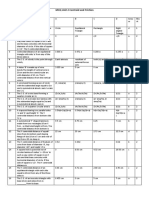0% found this document useful (0 votes)
1K views3 pagesCurrnt Transformer Testing Procedure
The document provides testing procedures for various tests conducted on current transformers, including physical verification, insulation resistance, polarity, ratio, winding resistance, and magnetizing characteristics tests. The tests are conducted to check for physical damage, oil leaks, insulation levels, polarity, current transformation ratios, winding resistances, and magnetizing characteristics according to specified procedures and acceptance criteria.
Uploaded by
Prabagaran PrtCopyright
© © All Rights Reserved
We take content rights seriously. If you suspect this is your content, claim it here.
Available Formats
Download as PDF, TXT or read online on Scribd
0% found this document useful (0 votes)
1K views3 pagesCurrnt Transformer Testing Procedure
The document provides testing procedures for various tests conducted on current transformers, including physical verification, insulation resistance, polarity, ratio, winding resistance, and magnetizing characteristics tests. The tests are conducted to check for physical damage, oil leaks, insulation levels, polarity, current transformation ratios, winding resistances, and magnetizing characteristics according to specified procedures and acceptance criteria.
Uploaded by
Prabagaran PrtCopyright
© © All Rights Reserved
We take content rights seriously. If you suspect this is your content, claim it here.
Available Formats
Download as PDF, TXT or read online on Scribd
/ 3


















